| Reviews & Columns |
|
Reviews DVD TV on DVD Blu-ray 4K UHD International DVDs In Theaters Reviews by Studio Video Games Features Collector Series DVDs Easter Egg Database Interviews DVD Talk Radio Feature Articles Columns Anime Talk DVD Savant Horror DVDs The M.O.D. Squad Art House HD Talk Silent DVD
|
DVD Talk Forum |
|
|
| Resources |
|
DVD Price Search Customer Service #'s RCE Info Links |
|
Columns
|
|
|
Norman Lear Collection (All in the Family, The Jeffersons, Maude, Mary Hartman, Good Times, Sanford and Son, and more), The
Sony has released a massive boxed set, The Norman Lear Collection, that gathers together the first seasons of some of the most ground-breaking and influential television series in the medium's history. Created, developed and guided by producer Norman Lear, the first seasons of All in the Family, Good Times, The Jeffersons, Mary Hartman, Mary Hartman (the entire first season is not included in this set), Maude, One Day at a Time, and Sanford and Son are included in this poorly-designed 19-disc box set, along with over six hours of new, never-released bonus material that should get fans either pumped up...or ticked-off.
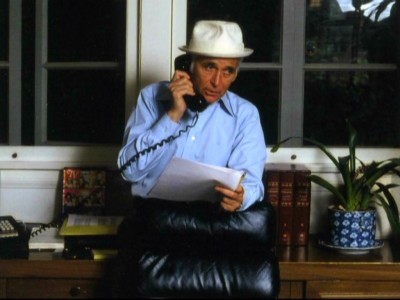
The reason I write that is because quite honestly, I'm not quite sure what to make of The Norman Lear Collection set. First and foremost, anyone owning any of the previous releases of these series won't need to double-dip for actual series content here. These are the same transfers, with the same menus, as the previous DVD releases. No effort has been made to clean up or digitally "boost" the Lear-ish video look of these shows (which were notorious even in their day for being about the cheapest, poorest-looking series on TV), nor has anyone restored or replaced cuts that might have been made from earlier releases (Mary Hartman, Mary Hartman, in particular - see my review link below). So, series content and transfers are the same, which begs the question, "Why release The Norman Lear Collection in the first place?"
Well, obviously, to return to the well one more time with these shows and make it next-to- impossible for collectors to resist plunking down additional money for those bonuses. Now, to the average vintage TV viewer/collector, there's a good chance they already own one or more of these titles. Recently, Sony had some good sales by offering both Good Times and Sanford and Son in cheap, one-shot releases of their entire series' runs. Of course, avid vintage TV collectors will shout, "Why re-release all these first seasons, which we already own, when Sony hasn't even finished releasing the later seasons?" And it's a damned good question. Where are the rest of the Maude seasons? Or All in the Family? Or The Jeffersons? Or One Day at a Time? Or how about even finishing up season one of Mary Hartman, Mary Hartman before you re-release Part One of Season One? Releases like The Norman Lear Collection make loyal DVD buyers very, very angry.
To be fair, for anyone who hasn't made the plunge with any of these series on DVD, or for those fans of the shows who are looking for a cool Father's Day or birthday present for a child of the 70s, The Norman Lear Collection is one big tasty treat - notwithstanding some of the problems with the transfers. Anyone jumping cold into The Norman Lear Collection will be more than satisfied with this collection - provided of course, that it continues. Who wants to just sample the first 13 episodes of All in the Family or the first season of Maude Findlay giving it to Walter but good, and then just end it right there? All of us want these shows out in their entirety, something that can only be said for Sanford and Son and Good Times at the present time. Will there be a The Norman Lear Collection, Volume 2? There had better be.
As for those bonuses, they certainly sound attractive. I'll detail specifics below in the "Bonus" section, but for fans of Norman Lear's oeuvre, it's hard not to get excited about the prospect of new interviews and featurettes on these series. It's hard, that is, until you start watching them. Now again, for the casual vintage TV viewer, these bonuses will be a welcome addition to their library, but frankly, for this reviewer, they fell far short of what I was expecting. Norman Lear truly is one of the giants of the medium, responsible for almost single-handedly changing the face of television in the early 1970s. What we watch on TV today would not be possible without his prior achievements, and that's not an overstatement. It's a fact. So at the very least, a boxed set entitled The Norman Lear Collection should strive for some kind of comprehensive tone, perhaps even an exhaustive scholarly approach, to one of the geniuses of the medium. Instead, we have a handful of slickly-produced but essentially empty featurettes on all of the series, with newly-filmed comments (in 2008) by Lear and some of the series' cast members, offering information most of us TV fans have heard countless times before in other TV-related documentaries. There are no commentary tracks. There are no TV historians or critics or pop culture "experts" (yeech) offering their takes on the shows. There are no booklets or inserts with articles on the series. There's only Lear, discussing the shows in generalized terms, his snippets apparently taken from one long interview session and inserted into the various docs which are heavy on clips...clips of moments that we've already seen in the full-length episodes we just watched. Cast members make appearances, too, and while theirs' and Lear's observations are well-taken, they're nothing new to anyone who's watched an E! True-Hollywood Story doc, or one of TVLand's features - and without any of the fun dirt (the doc for Good Times is a good - or bad, I should say - example of this shallow puffery, with that show's infamous battles over content utterly ignored). Again, for anyone new to these series, these bonus features will be a big plus factor on whether or not a purchase is made here. But for vintage TV fans worth their salt - and let's face it: probably the viewers most likely to buy this pricey set - the bonuses are a bit skimpy (although the inclusion of the two original All in the Family pilots is a low-blow that might make any collector think twice). We've seen and heard all of this before.
I've written extensive reviews for all of the first seasons of the series included in The Norman Lear Collection (my reviews for All in the Family and The Jeffersons were for later seasons), so I'll just included links here to those previous first season articles (again, the DVDs are the same here as they were in those releases), with a few additional comments to cover the first seasons of All in the Family and The Jeffersons.
ALL IN THE FAMILY
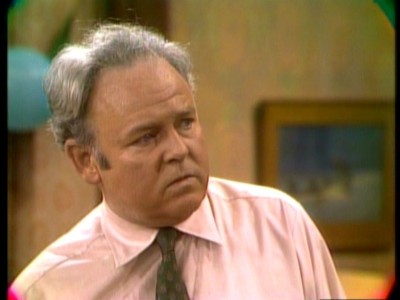
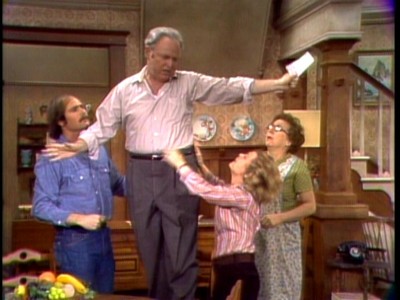
Reading back over my review for Season Six of All in the Family (you can read that review here), it's telling how mellow the show had become by that 1975-1976 season, particularly in comparison to the first coarse, fire-brand - and hilarious - 13 episodes included here in The Norman Lear Collection. A mid-season replacement in 1971, no one expected All in the Family to survive its initial 13 episode order - particularly after ABC had already passed on two different pilots for the show. As well, if one factored in the potential controversy that could come from having a television series that featured a loveable bigot as its lead, All in the Family's chances for success seemed remote indeed. How, then, could anyone have predicted that not only would All in the Family become a massive audience favorite, but also irrevocably change the face of television? By fixing its sitcom storylines firmly within a controversial issues-driven framework, and then letting its lead character, Archie Bunker (Carroll O'Connor) rail against those issues as he scrambled to adapt to times that were far outpacing his ability to understand them, All in the Family tapped into a zeitgeist of overwhelming societal change that was roiling America back in 1971. And leading that revolt within the formerly safe confines of the network TV sitcom was a hard-hat lower-middle-class bigot with a penchant for insulting anyone who didn't look or act like him. Considering how P.C.-friendly network television is today, I would imagine anyone not familiar with this show would be shocked to see a white character spew out racial and minority-oriented epitaphs with wild, ignorant abandon (as we all know, a double standard exists today for comedians of different races).
And in the first season of All in the Family, Archie lets them fly in a symphony of hilarious bad taste (even liberal Mike and goodness-personified Edith get theirs in, too). No one was safe from Archie's stupidity, not the "hebes," "spics," "spades," "polacks," "spooks," "gooks," "chinks," "jungle bunnies," "fairies," "fags," "dagos," or any other minority or social group Archie could senselessly denigrate. Not even his own family was safe, with his wife almost exclusively referred to as a "dingbat," while his son-in-law became forever known as "meathead." All in the Family's humor didn't rest solely on outrageous racial humor; its focus on controversial issues was just as noteworthy and shocking for people accustomed to the good graces of previous television families like the Petries and the Douglases. But All in the Family's secret sin - the delightfully taboo sin of all well-done racial humor, regardless of what race is doing the insulting - was that it was funny. We laughed first, then we were embarrassed, and then we couldn't wait for the next one (for those young enough to be offended by that thought, try listening to the absolutely hysterical screams of delight from audiences listening to Fred Sanford or George Jefferson - featured in this box set - defiantly calling out epitaphs like "honkey," "Whitey," "zebra," and of course, "nigger").
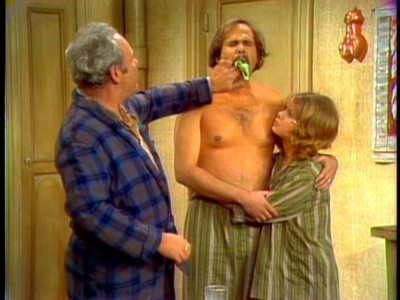
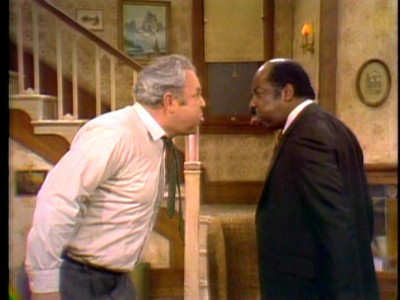
This is the kind of no-holds-barred television that was an absolute shock to viewers back in the spring of 1971, a vision of America that was not at all unfamiliar to viewers in their own real worlds, but a threateningly alien one coming from the Box that heretofore had been a relatively soothing, comforting window on the world. And that clashing of expectations - the Tube giving us a decidedly messy, unfavorable view of ourselves when previously, it had only, by and large, shown our best intentions - was All in the Family's lightening rod that galvanized the nation's attention. If you didn't live through those first few years of the show, it's impossible now to understand the effect that show had on television viewers. With today's fractured viewing audience sampling hundreds of channels from all over the world - if they can even be bothered to watch television - that kind of single-event phenomenon is unlikely to happen again, at least through the Tube. Watching the series now, after experiencing decades of programming that it directly influenced, the shock and awe of All in the Family has necessarily faded, but now I can concentrate on the absolute precision timing of the celebrated cast (I can much more appreciate Rob Reiner's and Sally Struthers' contributions here), along with of course, the genius of Carroll O'Connor's turn as Archie. Had Archie been drawn as nothing more than a outlet for shock-inducing racial epitaphs, he and the show would have either never gotten off the ground, or flamed out after the initial impact wore off (Mickey Rooney was originally sought for the role - a bad fit, I think). Instead, through O'Connor's shrewd performance (as well as Lear's and the writers' insistence right from the start that Archie's good points equaled his faults), Archie's plight becomes one we eventually feel sympathy for: a man out of his time, totally flummoxed by the demands of a rapidly-changing society he can't understand...or hold back. Once Archie was shown as essentially a caring, loving father and husband (O'Connor excelled as portraying a man practically incapable of expressing the tender emotions he felt towards his family), the die was cast: Archie may have been a bigot, but eventually, in the end, he only wound up hurting himself. And we felt sorry for him, hoping he might eventually change (while we laughed anyway at his outrageous comments), which he does over the course of the series. It's an iconic, indelibly etched portrait by the multi-faceted O'Connor - one that is equally hilarious and poignant.
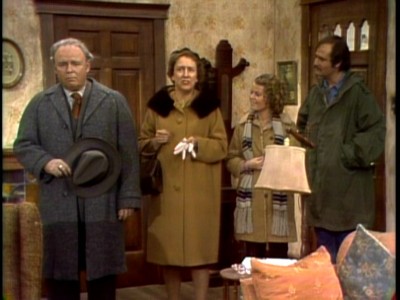
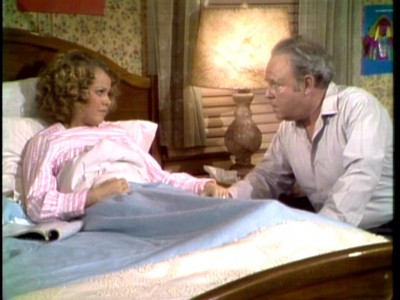
GOOD TIMES
You can read my review of Good Times's entire series, including Season One, here.
THE JEFFERSONS
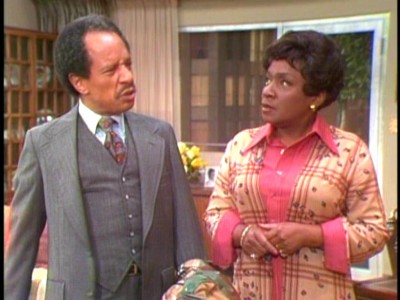
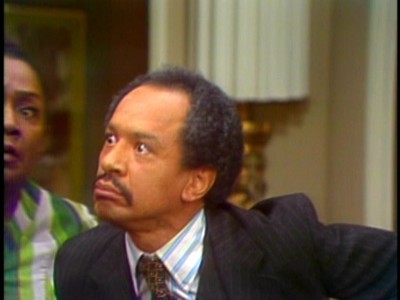
Looking back over my rather grumpy assessment of The Jeffersons' sixth season (you can read that review, which includes more background on the show, here), it's hard to reconcile that by-the-numbers go-around with this lively, bouncy, and surprisingly meaningful-at-times season. One of Norman Lear's many spin-offs, The Jeffersons took the delightful Louise Jefferson (Isabel Sanford), the next-door neighbor of the Bunkers (and treasured friend of dingbat Edith), and her not-so-delightful (but hysterically funny) husband, George (Sherman Hemsley, in a comedic performance that still impresses), and "moved them on up" to New York's toney East Side, in a de-luxe apartment in the sky. George, a venal, grasping businessman with a string of laundry stores, may be as much a bigot as Archie Bunker, but he doesn't care where his money comes from as long as it keeps on coming to him. Kindly Louise, still adjusting to the notion that she's now rich, has made friends with their odd British next-door neighbor, Mr. Bentley (Paul Benedict), as well as with upstairs neighbors Helen and Tom Willis (Roxie Roker and Franklin Cover), an interracial couple whose daughter, Jenny (the gorgeous Berlinda Tolbert), is dating George's and Louise's son, Lionel (Mike Evans, excellent here as he was on All in the Family). George's prejudice against whites and that "zebra" Jenny doesn't stop him, though, from courting the rich, powerful, influential whites who live in his apartment building - the whites who could potentially help him climb even higher on the ladder of success.
The Jeffersons has a reputation for "lightness" in comparison to All in the Family that I find correct, even though it occasionally tackled tough issues throughout its long ten-year run. There's a cheerful, farcical, free-wheeling feel to these first 13 episodes of the show, perhaps necessitated by the series' own format: the whole point of The Jeffersons is that they've "moved on up." They've made it. They're rich and successful, and they live in a beautiful high-rise apartment. They couldn't be more removed from the relative squalor that the Bunkers inhabit back on Hauser Street. And the writers would never put them back below the economic level they've achieved (they have to stay in that expensive apartment), so...what's not to be happy about here? Whereas in All in the Family, there was a constant threat of economic chaos with the Bunkers (until Archie became self-employed), money is good here on The Jeffersons, and steady. And whereas All in the Family looked as dingy and serious as some of its harsher storylines, The Jeffersons's apartment is bright and spacious, just like the comedy. Serious issues do come up (Jenny's feelings of envy for her white-featured brother; Mike's identity crisis when he realizes he doesn't have to strive as hard to succeed as his father did), and a central underlying theme is one of continual reevaluation and appreciation of where the Jeffersons came from - and how they had to struggle - prior to their new abode. But for the most part, tension in The Jeffersons comes in the form of broad farce conventions - and delightfully so, considering the talents involved here.
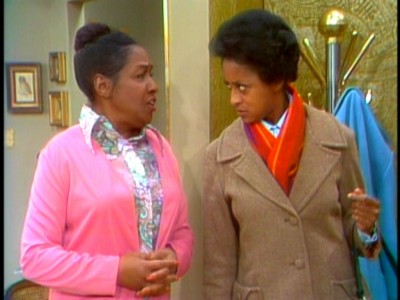
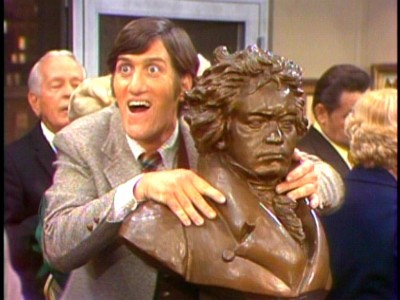
The character of George Jefferson is often thought of as a black version of Archie Bunker, but the set-up here mitigates a lot of the sting of George's racism. After all, the Jeffersons don't live in a "neighborhood," per se, but a high rise, where their immediate neighbor is an Englishman who is removed from America's racial history (at one point, Mr. Bentley inadvertently makes a remark that could be taken as a racial insult, which Louise quickly counters, telling George that he doesn't understand what he's saying). His other neighbors are rarely seen, and they take him for what he is: rich. He may be black, but to them, he's rich first. The interracial Willises provide a convenient target for George's racism (it's directed at other blacks, as well as whites), but eventually, he becomes as tolerant of them as he is of Mr. Bentley, whom he seems to genuinely like. Above all else for George, money is seemingly his key motivating factor. He may call Louise's Uncle Walt a tom, but Walt correctly counters that George is no different when he kowtows to the rich whites for their money and influence. Money and status are everything to George, until of course, family matters supersede that craving for success, and his true colors are shown. Eventually, he turns out to be no different than Archie in that his family comes first, regardless of his prejudices. If anything, George's essentially positive attitude and his grudging willingness to meet whites halfway, make him a far more happy person than Archie, who tries unsuccessfully to cling to past ways. And that happiness is the lift in The Jeffersons's tone.
And like All in the Family as well as all of Norman Lear's sitcoms, the casting aides the series' intended tone enormously. Sanford, a potent combination of straightman and potential harpy wife, is the perfect foil to the bantam rooster George (until Marla Gibb's smart-assed Florence the maid character largely took over that role). I'm not sure what else can be said about Hemsley's portrayal of George: if you've seen it, in its prime, even once, then you know it's a marvelously funny creation. Strutting around like a peacock, or glowering like an insane madman, Hemsley's vocal performance matches the intensity of his physical comedy, with Hemsley absolutely slaying the audience when he tries to strangle Florence in one of the episodes included here, or when he screams at her to "Get the door!" - a moment that I played back about five times because it paralyzed me. If The Jeffersons didn't "grow" the way some of Lear's other sitcoms did, there's no denying that it created a character, George Jefferson, this was as memorable - and funny - as Archie Bunker or Fred Sanford or Maude. And that's heady company.
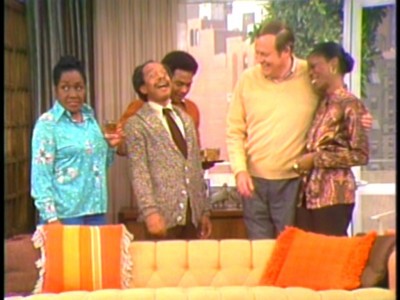
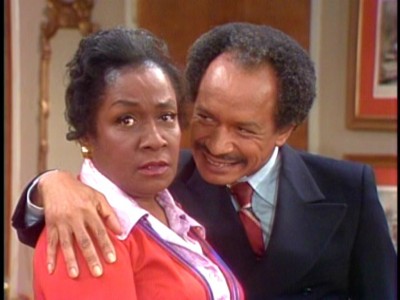
MARY HARTMAN, MARY HARTMAN
You can read my Season One, Part 1 review of Mary Hartman, Mary Hartman here.
MAUDE
You can read my Season One review of Maude here.
ONE DAY AT A TIME
You can read my Season One review of One Day at a Time here.SANFORD AND SON
You can read my review of the entire series of Sanford and Son here.The DVDs:
The Packaging:
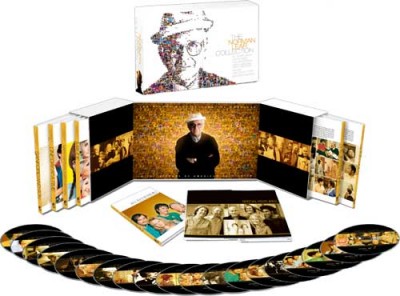
I've included a picture of the packaging for The Norman Lear Collection; it can probably explain itself better than I can describe this nice-looking but poorly-designed set. Opening up like a split book, each side of the larger white box holds four smaller book-like holders for the various shows and the separate bonus features. There's plenty of room for text material on those thick, glossy cardboard pages - but they're wasted with a few photos and maybe one or two quotes, printed large. Even worse, the holder system for the discs is the thoroughly discredited "cardboard pocket" design. That's right - the one that scratches discs. You have to put your fingers in and pinch the disc to get it out (because there's a fair amount of grip from the pocket), causing either smudges that can affect play, or scratches from the cardboard. The last time I saw this pocket system, it was on the M*A*S*H series set - and that stunk, too.
The Video:
As I wrote at the beginning of the review, the full-frame, 1.33:1 transfers for The Norman Lear Collection look exactly the same as previous DVD releases, right down to the menus. Norman Lear's house style wasn't the most photogenic, and that old, beaten-up video look could use some digital boosting. But unfortunately, that hasn't happened here in this re-release. If you're used to that look, you won't be disappointed.
The Audio:
The Dolby Digital English mono audio tracks accurately reflect the original network broadcast presentations. That being said, you will pick up some hiss, but all dialogue is heard correctly. Close-captions are available.
The Extras:
I discussed the worth of the bonus features included in The Norman Lear Collection above; here, I'll give some titles and running times, along with a few details. In a separate booklet entitled Special Features, Disc One starts off with Norman Says, "Don't Miss This!", an introduction by Norman Lear where he reiterates the collaborative nature of his achievements. It runs :48. Next up, four special features for All in the Family. First, Those Were the Days: The Birth of "All in the Family" has Lear, along with Jean Stapleton, Rob Reiner, and Sally Struthers discussing the origins of the show. It runs 27:00. In The Television Revolution Begins: "All in the Family" is On the Air, an older clip of O'Connor is included, along with the rest of the cast, as they discuss the cultural impact of the show (seriously, can these actors stop bringing up 1950s shows like Father Knows Best as examples of "false reality?"). It runs 30:39. The two bonuses that will probably make or break The Norman Lear Collection for fans of his work are included here: the two original pilots Lear shot for All in the Family for ABC in 1968 and 1969. The first pilot, Justice For All, features O'Connor (in a weird Archie wig) playing opposite Stapleton, with Tim McIntire and Kelly Jean Peters as Mike and Gloria (which could have been an interesting pairing, with Gloria much more loose and sexy). It runs 35:09. Those Were the Days features O'Connor and Stapleton co-starring with Chip Oliver and Candy Azzara as Mike and Gloria (hopeless); it runs 27:31. For Maude, there are two featurettes. And Then There's "Maude": Television's First Feminist runs 22:27, and features the late Bea Arthur, Rue McClanahan, and Adrienne Barbeau, along with Lear, discussing the origins of the show (where's Bill Macy and Conrad Bain?). Everything But Hemorrhoids: "Maude" Speaks to America runs 14:31, and looks at the impact the show had on television and society. Lear has an interesting quote here: "I described Maude as a "horseshit liberal." She didn't take the responsibility to learn what she needed to know to back up all of her strong liberal feelings. Which is true of a lot of us liberals." For The Jeffersons, Movin' On Up: "The Jeffersons" featurette runs a paltry 17:10, with a surface look at the series that's fairly insulting (and no Sherman Hemsley). And finally on Disc One, Good Times gets Ain't We Lucky We Got 'Em: "Good Times runs 27:37, and features a well-spoken Jimmie "J.J." Walker discussing the pluses of the show. However, no one mentions of any of the numerous production troubles that plagued this series, including fights between actors, writers and producers about how a lower-income black family was portrayed on the screen without the father figure played by John Amos - which shows you the depth of discussion for these puff docs.
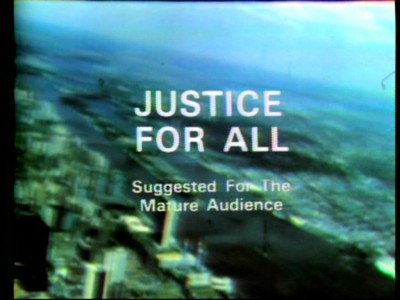
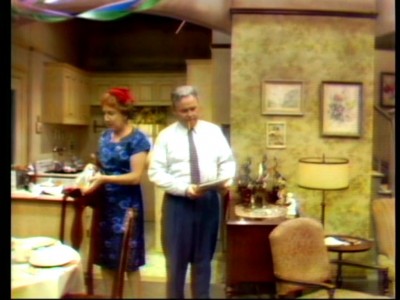
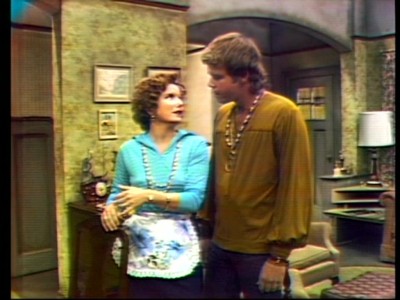
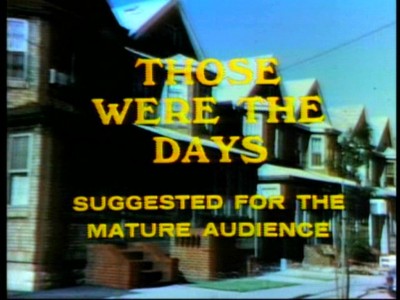
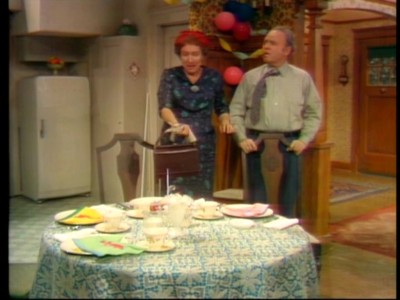
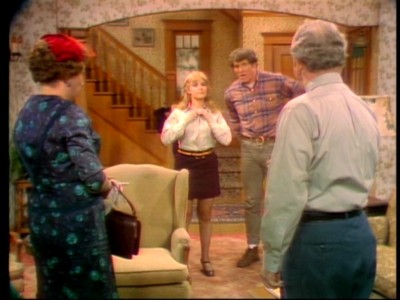
Final Thoughts:
How can I not recommend The Norman Lear Collection...for total newcomers to these series. For those viewers, The Norman Lear Collection features some of the most innovative, influential - and hilarious - television shows ever produced. Norman Lear was a genius in the medium, and his contributions to modern television can't be overlooked (although apparently, Lear's partner Bud Yorkin's name can be - he's not mentioned once here). The Norman Lear Collection is a great way for newcomers to jump into his world, and for those viewers - or for the fan who hasn't taken the plunge for previous DVD releases of these shows - I highly recommend it. However, for the hard-core vintage TV and/or Norman Lear fan, whether or not The Norman Lear Collection is a buy depends on if you want those bonuses - and I didn't find them persuasive enough to merit a double-dip. For us, I'd said rent the special features (if they would become available).
Paul Mavis is an internationally published film and television historian, a member of the Online Film Critics Society, and the author of The Espionage Filmography.


|
| Popular Reviews |
| Sponsored Links |
|
|
| Sponsored Links |
|
|
| Release List | Reviews | Shop | Newsletter | Forum | DVD Giveaways | Blu-Ray | Advertise |
|
Copyright 2024 DVDTalk.com All Rights Reserved. Legal Info, Privacy Policy, Terms of Use,
Manage Preferences,
Your Privacy Choices | |||||||













